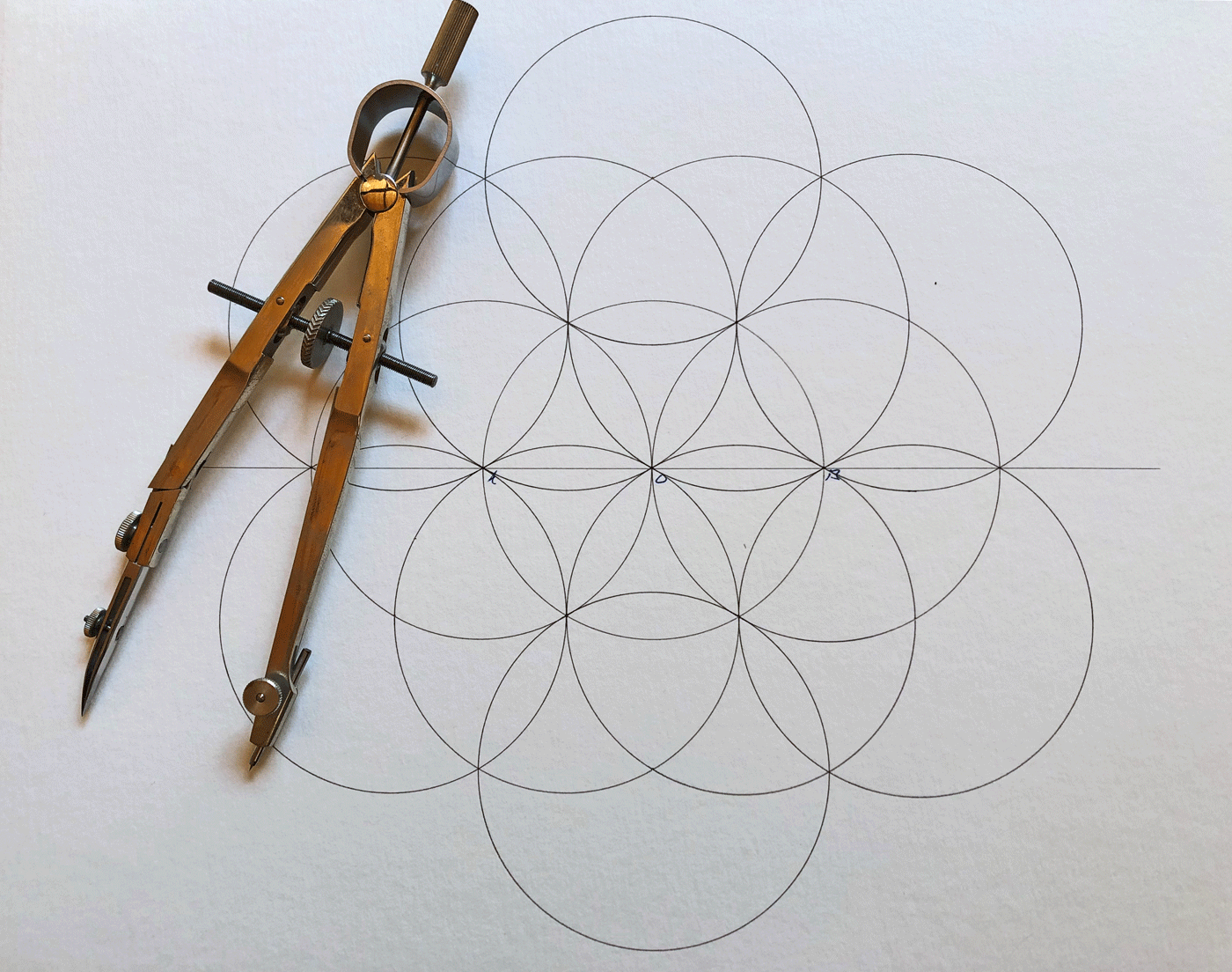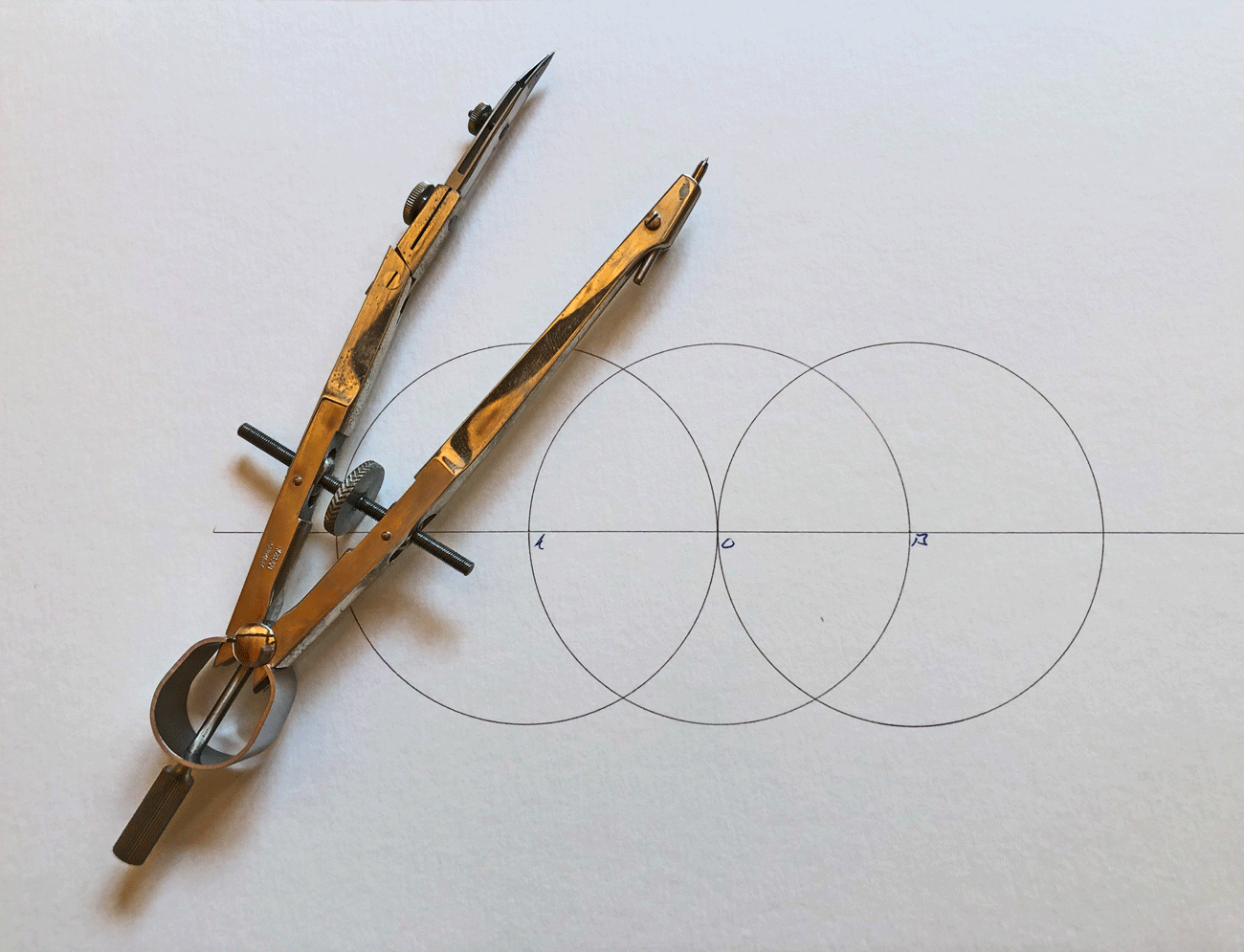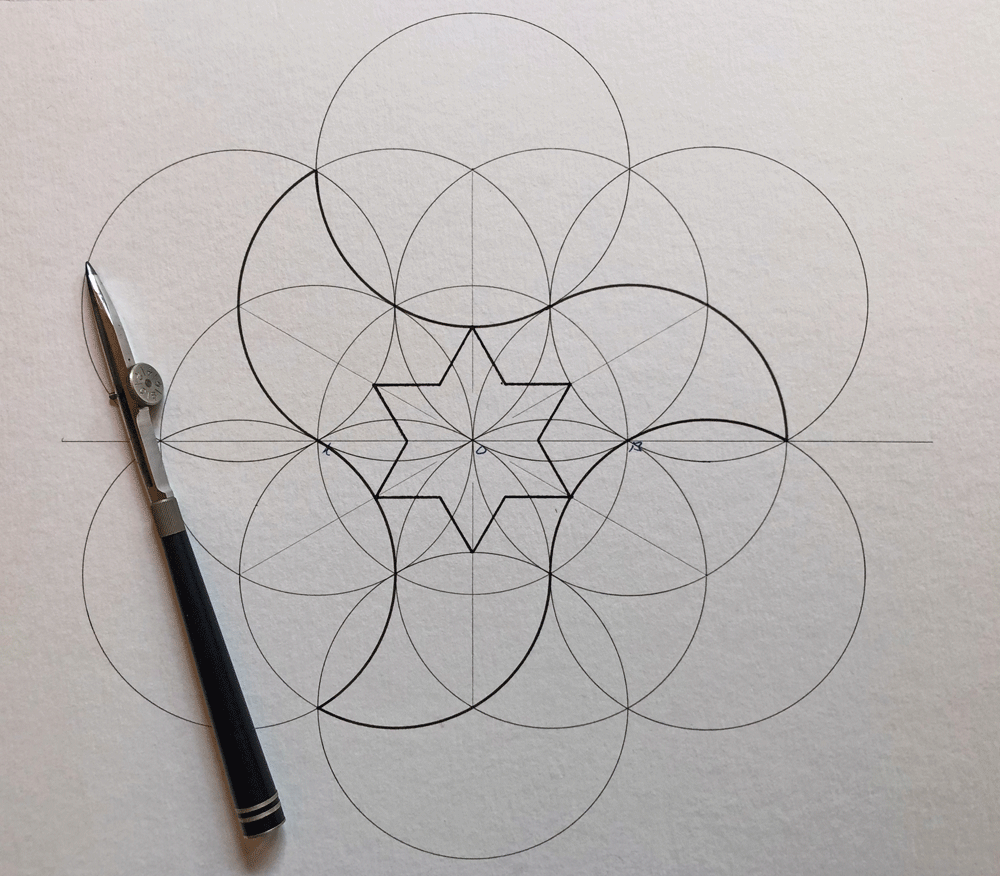A Compass Exercise: Precision Revealed.
The figure drawn here probably appears at some point in every book on technical drawing or geometric design ever published. It is presented in three ways.
It is presented philosophically as the root of pattern, and this is true. In some form, this structure lies beneath, is contained in, an enormous number of geometric patterns.
It is often presented as a practical way to draw geometric grids or layouts for pattern drawing. I will point out why in some later posts, but construction on this site will not normally use it for that purpose.
The third reason for mention is as a very demanding exercise in precision drawing. This uses a single radius and a theoretically infinite number of compass relocations as it expands. To finish with a correct figure requires very good technique. That would be the purpose here.
If we get as far as 13 circles, it illustrates an unusual and appealing type of tile, pinwheel tiling.
There are 13 circles in this layout. Each circle is at a new center. The compass was moved 13 times. This layout tests three abilities.
The compass lead needs to remain sharp and consisten through this exercise. If it is dull, you cannot accurately determine the intersections you need. I cheated here. This was drawn in ink with a steel pen. I set it to about 0.3 mm line. A slightly heavy ink layout line.
Identifying and marking those intersections is the second skill. Each compass center for the next ring of circles needs to be very accurate or this pattern begins to get messy very rapidly. Truly good results usually require marking the intersections as a separate step. It tests your ability with whatever tool you use to mark your compass centers.
The third test is of both you and your compass. This requires a stable compass and careful use. A consistent pressure in drawing is required for any but the best made compasses. (This is where you will discover that you should always draw pencil lead circles in only one, and always the same, direction.)
The figure begins with a line and a compass center, a point, on the line. This step is, perhaps surprisingly, the first source of problems. The compass center must be exactly on the line or everything else will be slightly off. Mark everything with a protracting pin, or an equivalent. Everything in this figure must go exactly where it belongs or messy gaps and overlaps swiftly appear. That first circle from [O] defines two new compass centers where it crosses the line, [A] and [B]. Four new compass centers appear where the circles drawn at [A] and [B] cross the first circle. And so it goes. How large the pattern becomes before errors become unmanageable is an interesting challenge.
13 Is My Unlucky Number
Alas, at the ring of the thirteenth circle, I can usually detect problems creeping in. On the next ring I will have a significant error unless I start “compensating”. A problem which shows your limit is defined by where the line no longer crosses the previous center exactly. You can feel it when you are drawing. This one just passes by touching but not crossing correctly at 11 o’clock. See how far you can get before a visible failure appears.
This is a very good test of your skill with a compass. It pays well to revisit it every year or so. Make it a contest.
If we make it to 13 circles, an interesting tile appears.
As I mentioned, there are some patterns which can use this complex layout. Selecting the tangent arcs above yields a very surprising “pinwheel” tile. Pinwheel tiles have a direction of “rotation.” This is a left hand tile. Place your hand over the pattern, thumb pointing out of the paper and note which hand gives the correct curl of fingers. The left hand tile tiles only with itself, the right hand with itself. I always find it surprising that this peculiar single shape tiles a surface perfectly with no gaps. A version of this pattern using this single tile in black and white, as a right hand tile, is found in the Alcazar in Seville.
The left hand pattern is found in the Alhambra, Patio de los Arrayanes. A further star polygon or polygon element is created in the center of the layout to make a four tile pinwheel layout. This pattern was recently taught by The Art of Islamic Pattern, May 2020 @richardhenryart.
A course by Lisa DeLong at The Prince’s Foundation School of Traditional Arts chose to emphasize the development of the dodecagon plus triangle Archimedean tiling from this compass construction.
This pattern can be seen as the root of many, many patterns.





